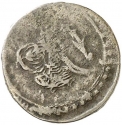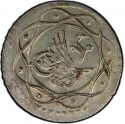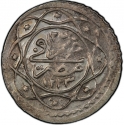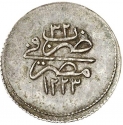You are about to finish your registration. Please check your mailbox (including spam folder). There should be a letter with a confirmation link. Check setting to make sure that your e-mail address is correct.
Send letter againDescription
Abdulmejid I (1823–1861) was the 31st Sultan of the Ottoman Empire and succeeded his father Mahmud II on 2 July 1839. His reign was notable for the rise of nationalist movements within the empire's territories. Abdulmejid wanted to encourage Ottomanism among secessionist subject nations and stop rising nationalist movements within the empire, but despite new laws and reforms to integrate non-Muslims and non-Turks more thoroughly into Ottoman society, his efforts failed in this regard.
He tried to forge alliances with the major powers of Western Europe, namely the United Kingdom and France, who fought alongside the Ottoman Empire in the Crimean War against Russia. During the Congress of Paris on 30 March 1856, the Ottoman Empire was officially included among the European family of nations.
Abdulmejid's biggest achievement was the announcement and application of the Tanzimat (reorganization) reforms which were prepared by his father and effectively started the modernization of the Ottoman Empire in 1839. For this achievement, one of the Imperial anthems of the Ottoman Empire, the March of Abdulmejid, was named after him.
The Eyalet of Egypt operated as an administrative division of the Ottoman Empire from 1517 to 1867. It originated as a result of the conquest of Mamluk Egypt by the Ottomans in 1517, following the Ottoman–Mamluk War (1516–17) and the absorption of Syria into the Empire in 1516. Egypt always proved a difficult province for the Ottoman Sultans to control, due in part to the continuing power and influence of the Mamluks, the Egyptian military caste who had ruled the country for centuries.
Obverse

|
Tughra in Abdulmejid I name with a flower at right, value below. عبد المجيد بن محمود المظفر دائما |
|---|---|
Reverse

|
Arabic legend with the year of the Sultan's reign on top and Ottoman Turkish legend "Struck in Egypt" and the accession year in Hejira (AH1255) below. ١٢ |
| Edge |







